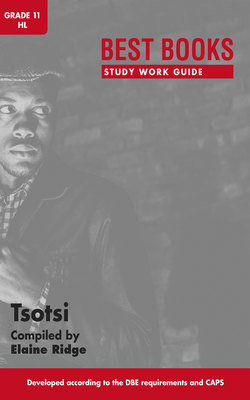Читать книгу Best Books Study Work Guide: Tsotsi Gr 11 HL - Elaine Ridge - Страница 15
На сайте Литреса книга снята с продажи.
Dialogue
ОглавлениеThe dialogue of the gang does not flow naturally, reflecting the rather superficial relationship between the characters and the fact that they tend to act rather than to talk. Much of their body language reflects the crude nature of their communication. When he develops relationships of trust, such as with Miriam and, towards the end of the novel, with Boston, it is significant that Tsotsi’s dialogue changes. This shows how language reflects the nature of the relationships between the people concerned.
The dialogue of the white people in the novel reflects their view that black people are inferior. The white people tend to patronise or to talk at black people. There is little sense that they see them as individual people.
Code-switching, or shifting to words in another language, is sometimes used (e.g. ai siestog: shame; your maag can’t take it: your stomach can’t take it; wragtig: really). The dialogue also reflects the pronunciation used by the people in this area (e.g. cit-ee-deeshin: city edition).
Not all dialogue is spoken. Tsotsi has silent conversations with himself on the past or what has just happened. This is known as internal dialogue.
